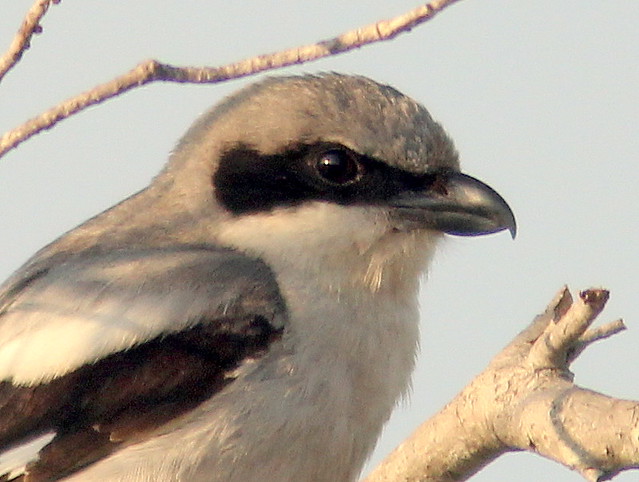
Back in New Jersey on August 21, 1949 I saw my first Loggerhead Shrike. It was my Life Bird #119. Actually, a few days earlier I had found grasshoppers impaled on the spikes of a barbed wire fence in the Passaic River bottomlands a short walk from my home in Rutherford.
I had read about how the "Butcher Bird," whose "weak feet" lacked the talons of raptors, must stabilize its victims in this manner to permit them to be torn apart with its hooked beak. Hoping one day to see mice and small birds in a shrike's larder, I did not expect lowly insects. I searched for the shrike to no avail until three days later, when I caught sight of my "lifer."
I did not know exactly what to call the bird, as nomenclature was confusing. My tattered little pocket Chester A Reed guide (published in 1923) called it a "Loggerhead Shrike." In those days birds were considered to be either "good" or "bad," but in Reed's opinion the shrike seems to straddle the line.

More up-to-date, my 1937 Peterson Field Guide to the Birds only illustrated the larger (and even less common) Northern Shrike:
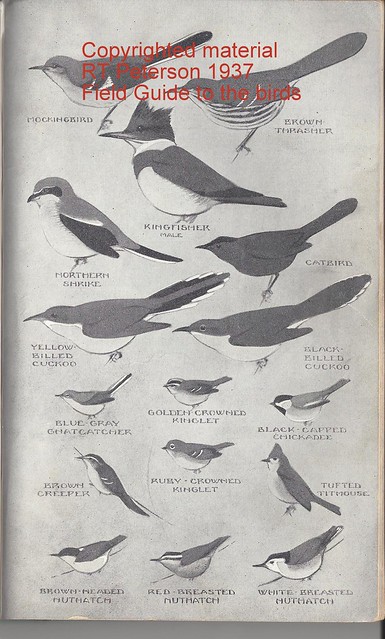
The text was not very illuminating, as it gave short shrift to the Loggerhead or Migrant Shrike as it was called:
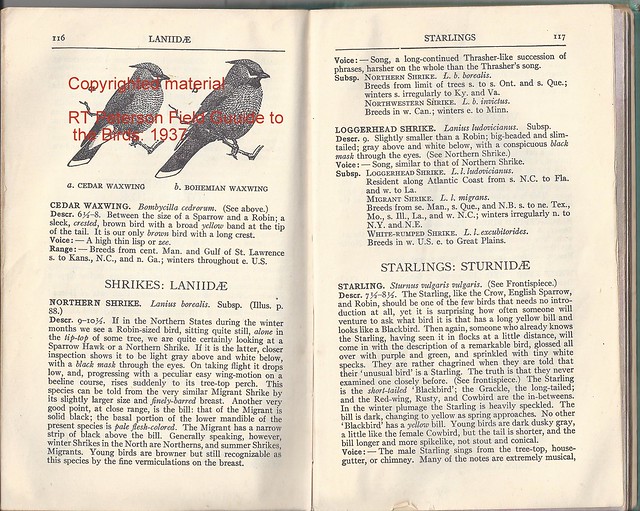
My "go to" reference for information about distribution and abundance was Allan Cruickshank's "Birds Around New York City (1942). I was elated that I had seen a relatively rare bird. Cruickshank reverted to calling it a "Migrant Shrike."

Only later, during the year of my first sighting, did Peterson's 1947 Guide appear, with the Loggerhead Shrike in all its glory.
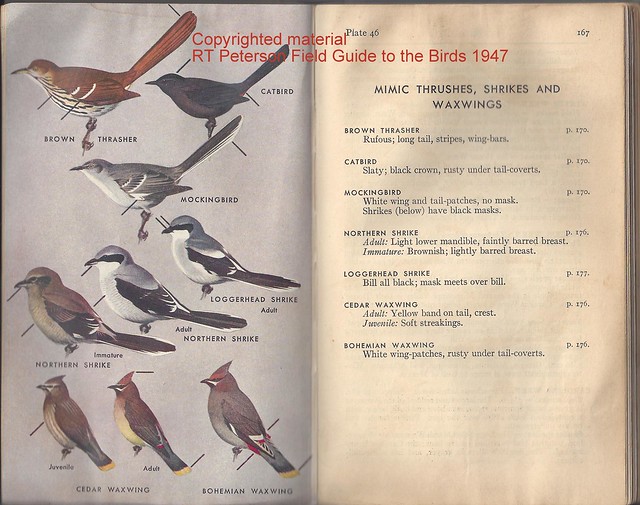
During the 20 years following my sighting, the Loggerhead Shrike became more common in New Jersey, especially in the southern reaches of the state. However their numbers decreased and they once again became quite rare towards the end of the 20th Century up to the present. Ingestion of pesticides in insect prey is strongly suspected as the cause of their drastic decline. In south Florida, now my home, they are quite common breeders and winter visitors.
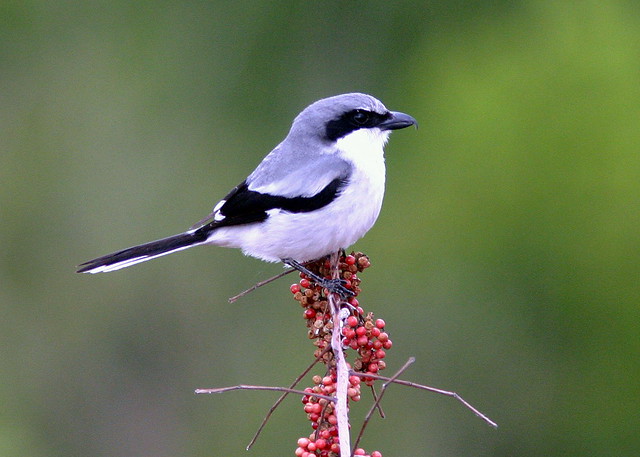
Their prey is varied, but mostly insects. I think this huge grub is a horsefly larva.
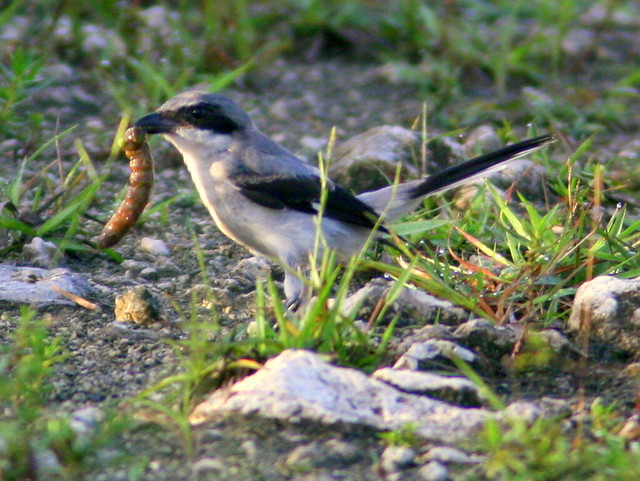
Except during the breeding seasons, Loggerhead Shrikes tend to be solitary. They often select the highest perch...
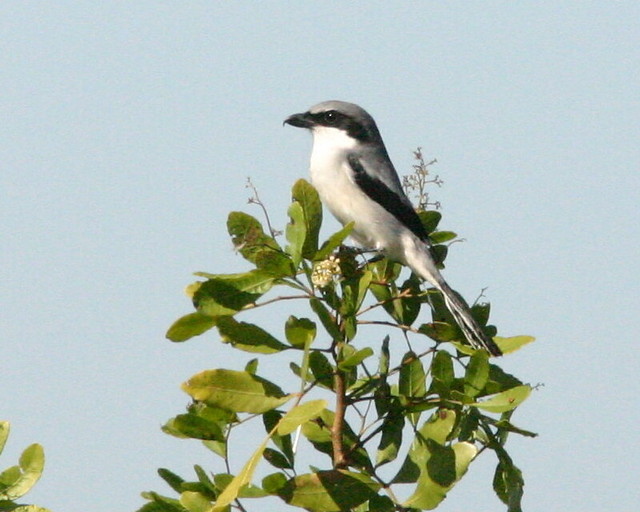
...and may be challenged by grackles...

...mockingbirds...

...and Blue Jays. In this case, the shrike retreated, possibly to simply avoid the company of others.
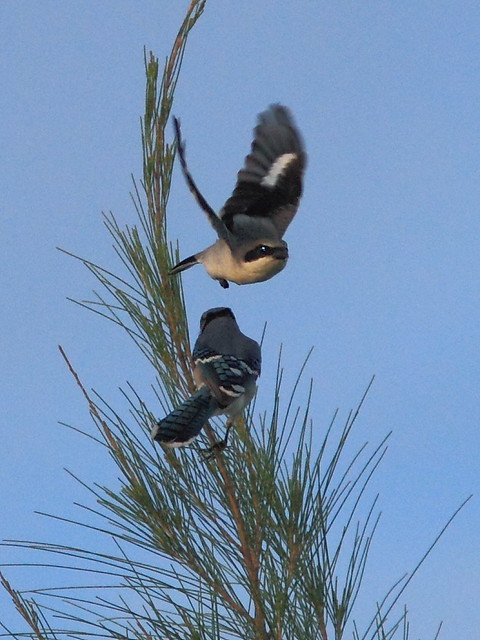
Yet, many time I have seen a shrike sit peacefully with a variety of other species, such as this American Kestrel...
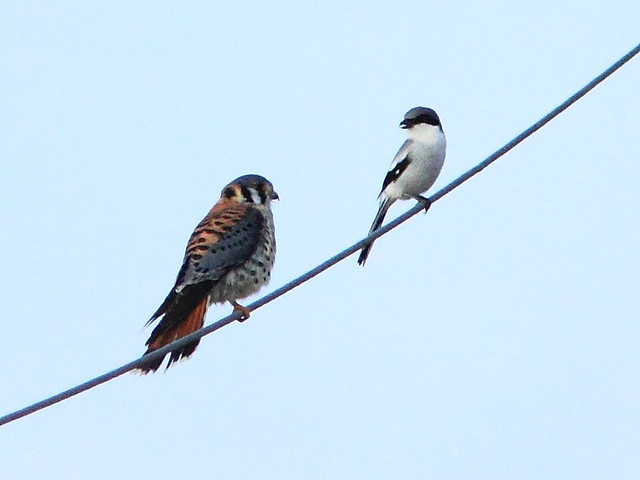
...or a Northern Flicker.
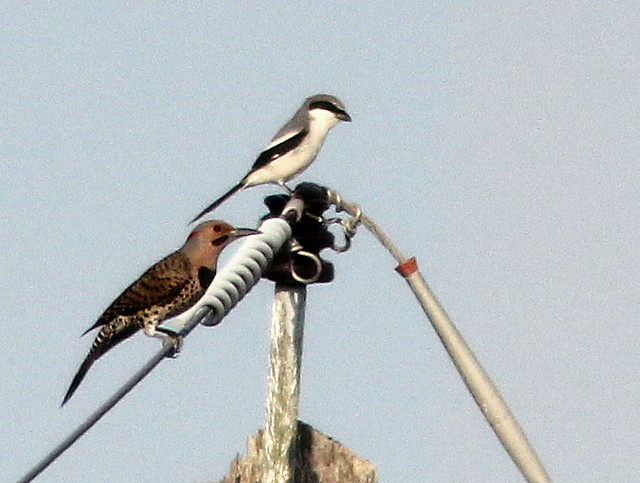
One of my more remarkable shrike images includes two shrikes with a Belted Kingfisher and a kestrel, in late November.

In June the shrikes are courting.

I usually find it difficult to get any closer than 30-40 feet from a Loggerhead Shrike, but this fledgling was an exception.
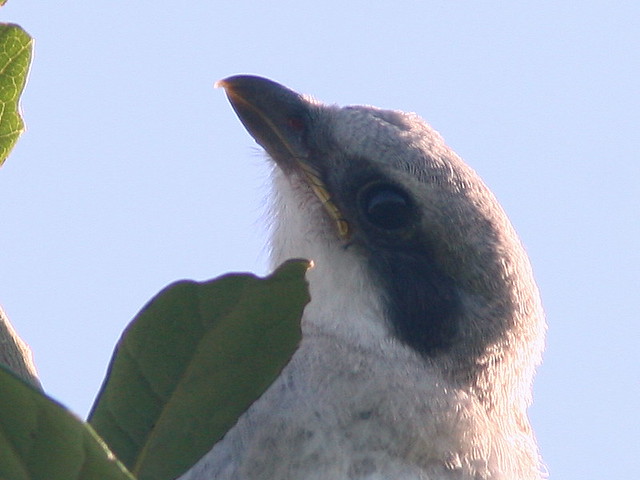
The shrikes like to hunt for lizards on our back patio, so I can get some close views through the glass doors.
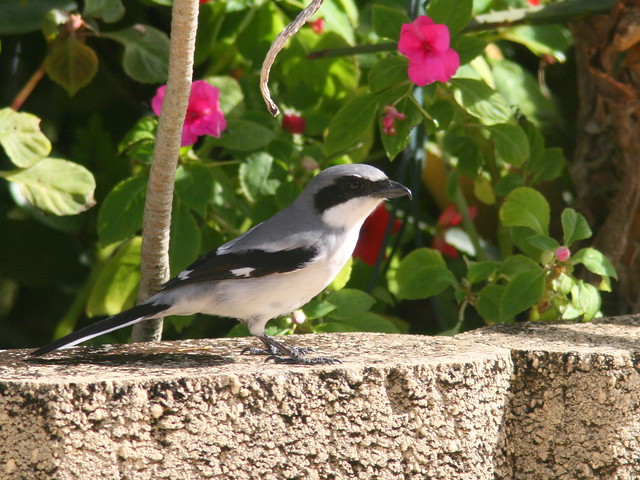
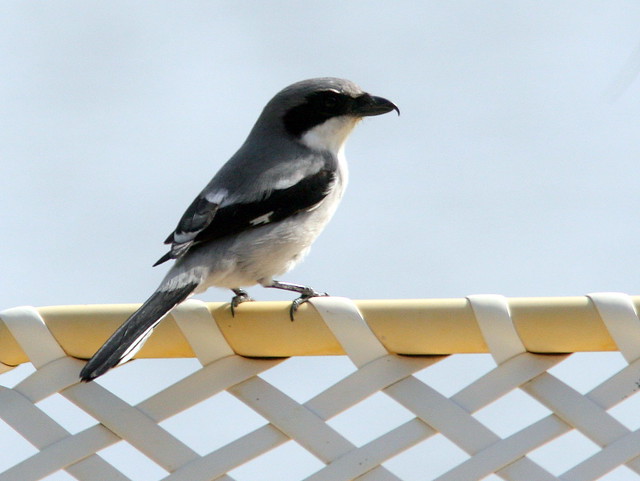
Parents watched this youngster as it unsuccessfully pursued a Brown Anole. They did not intervene, perhaps to teach their fledgling the importance of stealth and persistence.
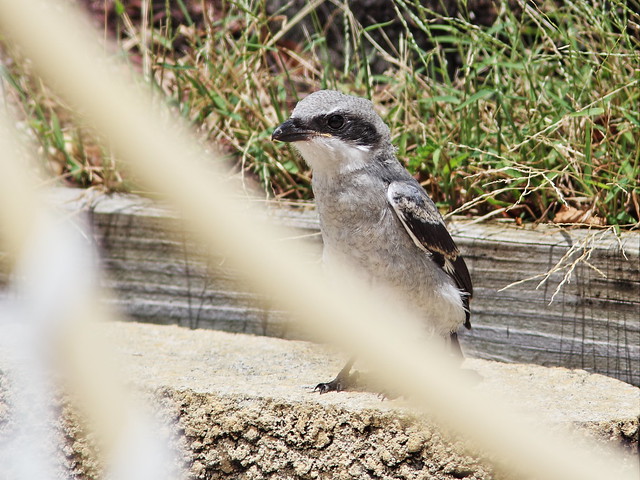
I will be away from Internet and cell phone service for much of these two weeks and prepared several posts in advance, but plan to get back with a "live" report as soon as possible.
Awesome post and photos of the Shrike.. They are cool birds. Happy weekend!
ReplyDeletethey're just beauties! i need about 100 of them here to do away with bazillions of grasshoppers...
ReplyDeleteReally great captures! So cool with the variety sitting together. Thankfully we now have the internet to help with bird identification!
ReplyDeleteYou cultivated a good crop. I love the kestrel, shrike and kingfisher united photo.
ReplyDeleteHow exciting! I always enjoy seeing these birds, but I have yet to see one in action. Don't know if I could stomach that, though. :/ Love all the different images you presented here.
ReplyDeleteBtw, your blog fell off my reader for some reason. I have added it back today. Feedly had trouble adding the feed also. Just wanted you to know I have not been ignoring you!
Not only are the photographs great, but I appreciate the way you introduce us to these old field guides. I enjoyed this post very much.
ReplyDeleteA very nice series on the "Butcher Bird", Ken! Love the images of multiple species in one frame!
ReplyDeleteVery nice, informative and interesting post on the "Butcher Bird", Ken! Love the images of multiple species in one frame!
ReplyDeleteSuper post Ken. Interesting to see how the field guide publications have changed over the years.
ReplyDeleteEnjoy your break.
Hi Kenneth. what a wonderful post both for information observation and beautiful shots of this interesting bird. have a wonderful time away.
ReplyDeleteIt's a very handsome bird. It was interesting to see the old books too.
ReplyDeleteReally fantastic photos! Wow! And how can a bird ever be considered "bad." They are what they are. And he is a lovely little bird.
ReplyDeleteThis comment has been removed by the author.
ReplyDeleteTrying again. Working from my iPhone I am all thumbs and inadvertently deleted this nice message from Janice:
ReplyDeletejaniceadcock (http://janiceadcock.wordpress.com/) has left a new comment on your post "This Weeks's Crops & Clips: Loggerhead Shrike":
Beautiful shots and such great information. Those birds are so pretty.
I really love that you show the pages from those old bird books. Wonderful collection.
ReplyDeleteAnd the shrike images are beautiful. And the one with the three birds is a little miracle itself. Thank you for showing this. (There are shrikes in Arizona and the CA desert; the first time someone told me about them, even when they showed me the impaled prey, I thought they were telling me a tall tale just to see how gullible a new birder might be.) But then I looked them up!